Forecasting when sales of electric vehicles will go mainstream is not as simple as producing a hockey stick like chart of up and to the right. While many observers believe that we will wake up one day and see electric vehicle (EV) sales suddenly explode, similar to smartphone sales a decade ago, autos are much more complex and a sudden explosion in sales is probably unlikely.
Electric vehicles are, however, clearly on the way to mass adoption but there are potentially dozens of factors that could either speed up or delay sales growth of EVs.
In this first post of a 3-part series I outline 8 of 24 factors I’ve identified that will (or could) impact sales of electric vehicles:
1. EV Model Availability: Ultimately I believe that supply is the most important factor that will drive EV sales. When you can walk into an auto dealer and a salesperson can show you 5 or 10 EVs and not just 1 or 2, sales will then ramp up significantly. For most automakers, however, we likely won’t see 5-7 EV models actively sold (not compliance models) for another 10 years.
2. Cost Competitiveness With ICE Vehicles: Many EV observers like to point to the lower cost of ownership of electric vehicles as making them currently comparable in cost to ICE vehicles. But I don’t buy it. Fleet managers purchase vehicles based on TCO, but most consumers buy a vehicle based on purchase price and the monthly loan or lease payments they can afford or are willing to pay. When EVs have comparable driving range and are priced the same or at least very close to ICE vehicles – and without government incentives – then and only then will a huge adoption hurdle be eliminated.
Source: Bloomberg New Energy Finance
3. Range: While many observers believe that 250-300 miles of range will be key to mass adoption of EVs, I believe that a large percentage of consumers (especially late adopters and laggards in truck and SUV crazy US) will expect EVs to have the same or more range than comparable ICE vehicles. This means a range of 400-500 miles may be required for at least half of consumers to take the EV plunge. This longer range expectation would likely add around 5 years to the mass adoption timeline.
4. Charging Infrastructure: An abundant supply of fast-charging stations along major highways and at least an ample supply of level 2 charging stations at or near multifamily housing locations is critical to driving mass adoption of EVs. Tesla has made great progress toward solving the road trip problem and a number of utilities and automakers are especially focused on bringing charging stations to apartments in the US. Charging is one of the most critical “chicken or the egg” challenges for EVs with many consumers likely waiting until charging stations are seen as being ubiquitous before buying.
5. Charging Speed: Consumers are used to fueling their ICE vehicles in about 5-7 minutes. Early adopters of EVs have no issue with charging overnight or planning activities like eating at a restaurant while they charge on a road trip. But will this paradigm shift of charging while doing other things be acceptable to mass consumers? What will the acceptable time to reach an 80% charge be while away from home for late adopters? Will 15 to 20 minutes or more with a DC fast charge suffice or will a significant percentage of consumers expect EVs to charge in about 10 minutes? “Time to charge” may ultimately be a bigger hurdle for many consumers once most EVs have a range of at least 300 miles.
6. Gas Prices: The price of gas and diesel (“petrol”) is impossible to predict but could also have a huge impact on adoption of EVs. A significant increase in gas prices could greatly increase interest in PHEV or BEVs by consumers and see car dealers push consumers toward more efficient vehicles. But if gas/petrol prices stay about where they are currently or even decline, then EVs become less attractive to many consumer segments.
Source: US Energy Information Administration – Annual Energy Outlook 2018
7. Battery Supply: If demand for EVs suddenly exploded, it is possible that the supply of battery packs could not keep up. This is probably unlikely, however, as battery pack production is likely to increase at roughly the same rate or higher than EV demand. If battery production starts to scale significantly and with increased supplier competition, the price of battery packs could decline at a faster rate than many predict leading to more cost competitive EVs.
8. Battery Technology Breakthroughs: Battery packs have been increasing in range roughly 10-20 percent and declining in cost around 20% each year. But it is expected that EVs with solid-state batteries will begin reaching market perhaps around 2025 and potentially with range increases of 2 to 3 times. When EV battery packs can easily deliver a range of 400-500 miles at a cost of around or below $100 per kWh, then range and EV costs become a non issue.
In parts 2 and 3 of this series I will outline 16 more factors that will affect EV adoption – from China to auto dealer training.
Related:
- 24 Factors That Will Affect the Rate of EV Adoption (Part 2)
- 24 Factors That Will Affect the Rate of EV Adoption (Part 3)
- 500 Miles of Range: One Key to Late Adopters Embracing EVs
- When Will Electric Vehicles Achieve Mass Consumer Adoption?
- Stat of the Week: Comparing the Ratio of EV Charging Stations Versus Gas Stations – EVs Win
- 500 Miles of Range: One Key to Late Adopters Embracing EVs
 Announcing the acquisition of EVAdoption by Paren →
Announcing the acquisition of EVAdoption by Paren →
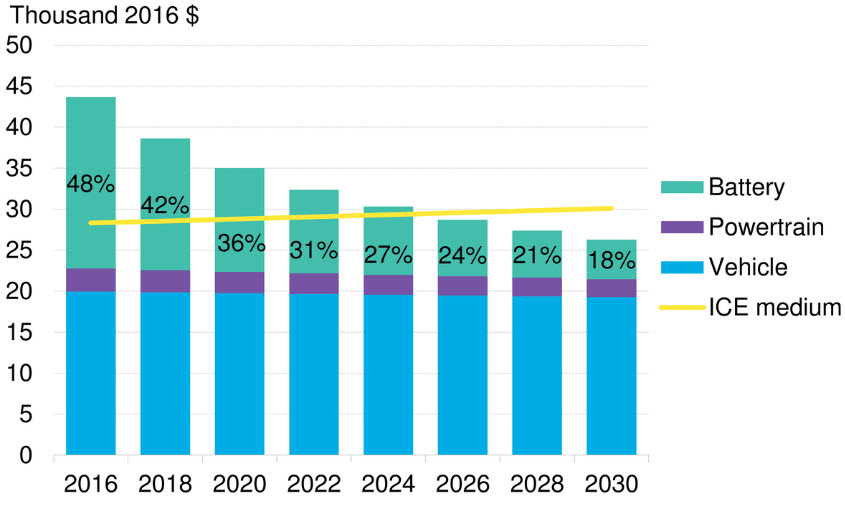
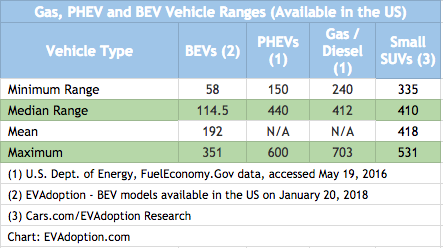
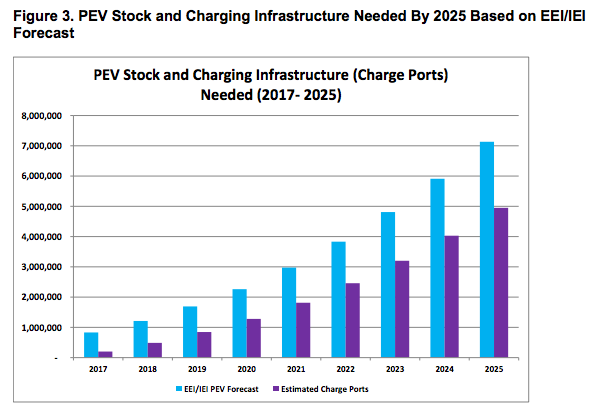
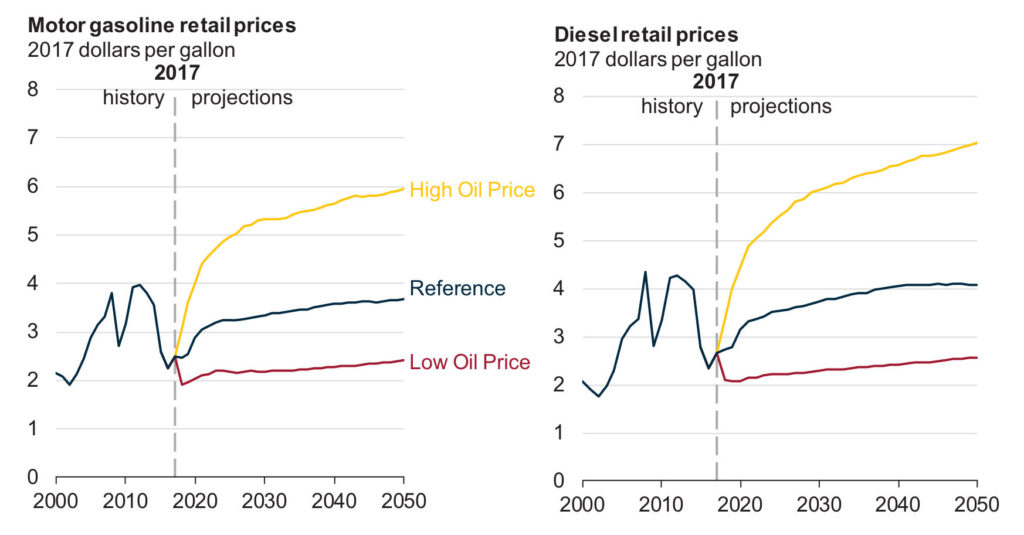
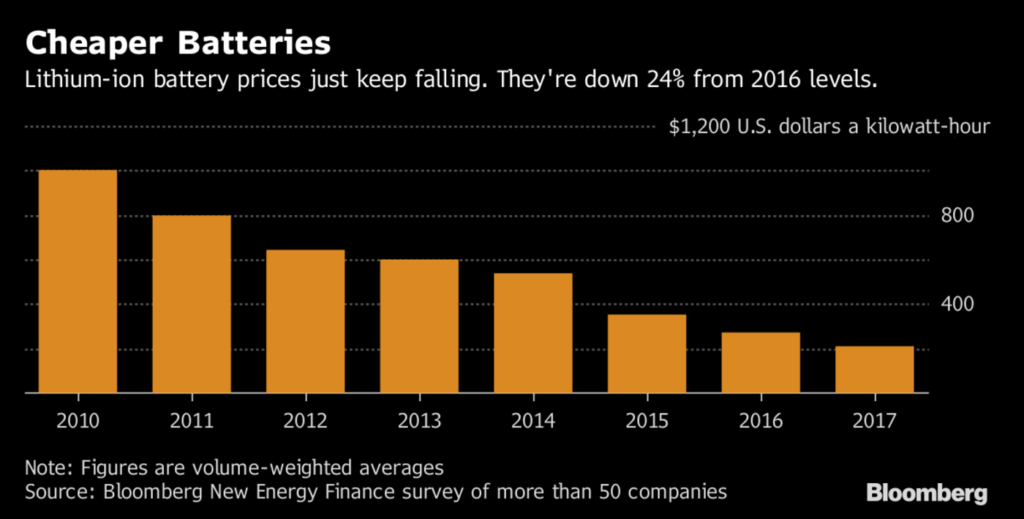
4 Responses
Hey Loren, it might be fun to try consolidating these factors into a BEV-adoption equivalent of the 7-factor “Drake Equation”.
YearsTillBEVAdoptionExplosion = (ChargingTimeInMinutes * SomeFactor) * (NumberOfChargingLocations * SomeFactor) * (RangeInMiles * SomeFactor) * (BEVPricePremiumInDollars * SomeFactor) and so on…
Thanks for the suggestion Scooter. Ya, I’ve been noodling an EV Adoption Index for awhile and also about 18 months ago I did some regression analyses using various data on all 50 US states and it seemed (surprisingly) that gas prices had the highest correlation with EV sales. I plan to get back to one or both of those efforts. I’ll look into the Drake Equation concept – great suggestion!